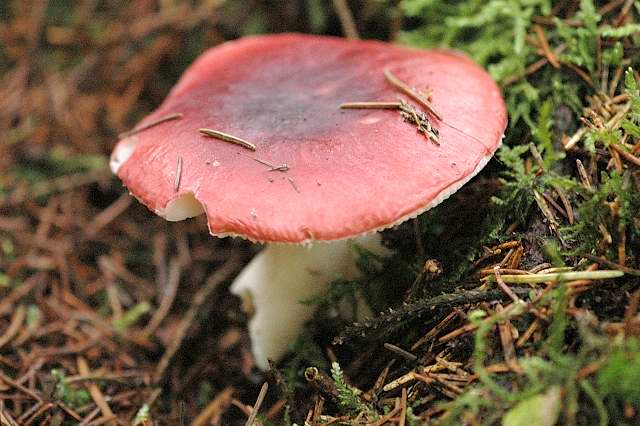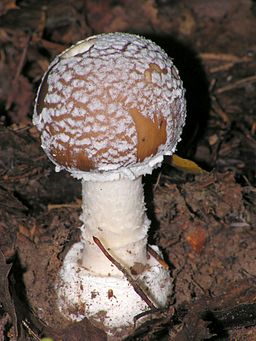I was lucky enough to spend two years living in Sweden, it seems to me that over there a much larger percentage of the population take the collection of wild food for granted; the majority of people will happily eat wild food such a mushrooms and berries and most of those will take part in collecting those foods themselves.
In the UK it seems that the number of people who make their own jams, juices, soups, pies and preserves with wild ingredients are dwindling, although there have been recent resurgence of enthusiasm for wild food with the likes of Hugh Fearnley-Whittingstall regularly including wild ingredients in his cooking and mentions of wild ingredients on other other popular TV cookery programmes such as BBC's masterchef.
Now foraging is a major hobby of mine and I regularly cook food with foraged ingredients for my family infact tomorrow Sunday dinner will be goose which I traded for some venison with a stuffing of mushrooms and sweet chestnuts foraged today. I try and get my children involved in the foraging as well and they today helped pick the mushrooms and find the biggest sweet chestnuts among the fallen leaves. They know not to pick or eat any mushrooms unless I have checked them first but I think children generally miss out on that kind of experience in Britain. As with Sweden I think there is a greater acceptance of foraging in Europe than over here and parents have the knowledge to teach their children which fungi, berries and plants are edible and which are poisonous, in fact it's so much a part of the culture that mushroom picking features in this episode of the Moomins;
 |
| Moomin; By kallerna - Own work, CC BY-SA 3.0, |
Follow the links to jump to the appropriate spot in the episode unless you want to watch the whole episode about Moomin and his invisible fiend.
This LINK will take you to the original Swedish.
This LINK will take you to the English translation.
And one for luck; the LINK will take you to the Norwegian translation.
And one for luck; the LINK will take you to the Norwegian translation.
Children in Europe are watching programs in which mushroom foraging is portrayed positively and would clearly be something they could relate to. It's a shame that most British children would not be able to relate to the experience of mushroom hunting, maybe they should all watch this episode so they start pestering their parents to take them out to look for mushrooms.
The reason I have provided the links in the original Swedish (and in Norwegian) is that I'd like to make a point about the translation; in the Swedish and Norwegian versions the real names of the mushrooms depicted are used whereas in the English translation the names of the fungi the characters have collected are just made up, have you ever heard of an 'insiduous pepper spunk'?
 |
| English (as in the Moomin episode); Cowsbane Swedish; Röd flugsvamp Norwegian; Röd flugsvamp REAL ENGLISH NAME; FLY AGARIC |
 |
| By Steve Partridge, CC BY-SA 2.0, English (as in the Moomin episode); Deadly tufted toadstool Swedish; Giftkremla Norwegian; Giftkremla REAL ENGLISH NAME; Russula emetica |
 |
| By James Lindsey at Ecology of Commanster, CC BY-SA 3.0,
English (as in the Moomin episode); Insiduous pepper spunk
Swedish; Pepparkremla
Norwegian; Pepparkremla
REAL ENGLISH NAME; Russula badia (burning brittlegill)
|
So my big questions are;
- Would this sort of content make it into a children's television programme made here in the UK? or would it be considered irresponsible or a liability if someone tried to sue after eating something depicted?
- Why not provide proper translations of the names of the fungi depicted? It's fairly clear just from the pictures what they are meant to be (at least for the fly agaric and panther cap) and if someone has gone to the trouble of translating the rest of the programme why not the names too. It's not a case of the name being lost in translation if it was just a case of a direct translation from Swedish not matching the English name we'd have had a 'red fly mushroom' not 'cowsbane'.
I suppose the answer might be that on the whole we don't care enough about nature in the UK, it's not interesting enough and we are slightly scared of it. I hope that's not the answer but I am concerned that it might be and for that very reason I am starting a new vlog specifically to share ideas and experiences of teaching children in nature and the outdoors and helping them learn to love it.
Look out next week for the first installment of the Bushcraft Babies vlog.
Thanks for reading






No comments:
Post a Comment
Note: only a member of this blog may post a comment.